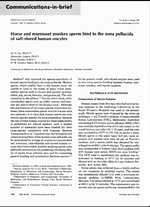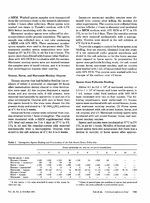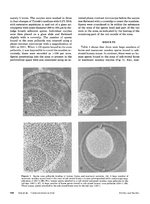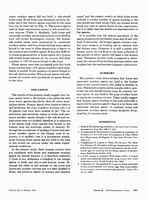This is a post I originally posted at the AoZ forum thing several years ago before I stopped going there, because for some reason TOR was getting blocked all the time.
Anywho, this is a copy I have of what I posted. There's long been a discussion about women getting pregnant from dogs. IDK why this keeps coming back up. It's simply not possible. The people who claim its possible or that it 'might' be possible always come up with anecdotes or some very very stretched reasoning to back up their position.
While there are many threads along the same lines as this, this is specifically intended to serve as a thread for scientific discussion on the issue. Hopefully we can put this claim to bed once and for-all.
I would ask one thing from any participants in this thread. If you are going to make a claim about something... provide a source. You don't have to source every sentence you make, but if you're relying on some principle to back up your claim, you better do your damn diligence and have something to back it up.
I went into this knowing that a successful synthesis of a human ovum and a canine sperm is not possible. But my curiosity lies in how far it can get -before- it fails. I have a BS in Biology and I'm working on my Masters right now. I dont know everything... I'll admit there's a lot I dont know, but I when I want to know something, I try to research it and learn it.
Ok... so without further ado... Here's the original post: (With some basic grammar and spelling corrections)
The Science of Canine Male + Human Female gamete interactions
A look into the cellular mechanics behind canine sperm and human egg interactions.
Warning: Nerd alert - this is very science-y
Disclaimer: I'm a bio major and This has sort of been a pet research project for me for the past couple years. I have posted this elsewhere before, but I'm not sure how many places its been repeated. But lets get one thing crystal clear. It is impossible for a human to get pregnant by a dog. Anyone claiming otherwise is either outright lying or an idiot. It's definitely a fantasy of mine, not going to lie, but its 100% impossible.
Others will claim that the human egg and canine sperm will fuse and the single cell will live a few days before dying. This is also 100% impossible and a total lie. Due to chromosomal mismatch, a complete DNA strand cannot form, thus no viable living single cell at all.
My main point of researching this was to see if Canine sperm will do anything with the egg at all. If the proteins are not right the sperm will just wiggle around and try to do their thing. I'm curious if the sperm will chemically try to bond with the egg and breach the egg cell wall and try (and fail) to fuse with the egg nucleus. This is unknown and I haven't been able to find the necessary information to see if this can happen. Most likely there isn't enough research out there in the differences between all the human/canine proteins to know... so I'd need to actually take some canine sperm and a human egg and try artificial insemination and use an electron microscope to see what happens. But lets be real... that's never going to get approved at my university so I'm not even going to bother to ask. lol
Anywho, lets get on with this... by starting with how it works in a HS/HS situation:
Between humans, spermatozoa and oocyte fusion in the membrane adhesion area requires the presence of 3 membrane proteins (spermatozoa IZUMO1; oocyte receptor Juno and Cd9). The first one being the important one on the spermatozoa side, the latter on the oocyte side.
That would proceed as shown in the article image Source here:
Image is missing, because of the repost
In Humans this ultimately leads to the formation of a zygote pronuclei as the Male and Female haploid nuclei approach each other and nuclear membranes break down.
After this then the DNA starts to bond together and divide into a multi cell blastocyst. If everything goes well this all happens within the first 24 hours.
So what would actually happen here biologically if it were K9 spermatozoa / HS oocyte? It’s obvious that a human female cannot get pregnant by a canine… but a canine’s spermatozoa don’t know where they are. Would Oocyte Activation ever occur and the intracellular machinery of the oocyte would try to process the DNA of the spermatozoa cell or not?
I assume the spermatozoa would attempt to fertilize the oocyte. With humans the spermatozoa have to sort of burrow their way in and then bond with the egg with certain proteins. Would canine spermatozoa be able to bind with the external layer of a human oocyte and attempt to fertilize the oocyte? That's what I want to determine.
This is the first question; would the k9 spermatozoa actually fuse with the oocyte? If it can’t then the rest of the discussion is pointless, but if it does, things are at least one step further down the path before failure. As I sated above, in humans it is the IZUMO1 protein that is important on the spermatozoa side. For more than obvious reasons I was unable to find any research into if the spermatozoa Human zona pellucida protein (ZP2) would effectively be a reciptor for the K9 spermatozoa. If Human ZP2 does not receive the k9 spermatozoa, then membrane fusion cannot occur.
I did find the following on page 317 tonight while reading
https://books.google.com.ua/books?id=95XqDQAAQBAJprintsec=frontcover#v=onepageqf=false
It states that Dogs have a Izoumo1R gene, and that it’s located in a similar location as human spermatozoa. It states that it its plausible but untested that the purpose of IZUMO1 and JUNO in canines allows the spermatozoa to fuse with oocytes during fertilization like it does in Humans. Sadly the google books preview I found doesn’t have the pages surrounding that to get the rest of the context.
I have not yet found the breakdown of the differences in the IZUMO1 gene and the protein it codes for in Humans and the IZUMO1R gene in Canines. So this is where I will be focusing first. I’m not sure how much research has gone into Canine reproduction, so there may be no answers.
However, lets make sure we dont lose our grasp on reality, even if Oocyte activation is possible, a Canine/Human hybrid is not possible.
There is no way the embryo should be able to develop, since there is no way that the DNA could match up. Humans have 23 pairs of chromosomes, while Canines have 39. There is no way that the DNA would be able to be spliced together enough to create a viable cell that could even start to divide. By day 2 a properly fertilized oocyte is already a multi-cell blastocyst. Since Human and K9 DNA is not compatible, there is no way that it could reach this phase.
Binding of mammalian spermatozoa to the zona pellucida and the induction of the acrosome reaction are prerequisites for successful oocyte fertilization. The human oocyte coat, zona pellucida (ZP), is composed of four glycoproteins designated as zona pellucida glycoprotein (ZP1, ZP2, ZP, and ZP4) respectively. The zona proteins possess the archetypal ‘ZP domain’, a signature domain comprised of approximately 260 amino acid (aa) residues.
Mice which are used as the initial basis for fertitlity research for humans have 3 glycoproteins (ZP1, ZP2, and ZP3). The reason mice are used is that the similiarity in fertilization is very similar.
I have not seen much research into Canine/Human similarities, but I have found Canine/Mouse research.
We also know that canines are similar to Mice in that they have 3 glycoproteins, but they are (ZP2, ZP3, and ZP4. And research points to them having the same roles. Source:
https://www.ncbi.nlm.nih.gov/pubmed/9361810
Anti-ZP3 vaccine for canines which reduces fertility in canines, has been shown to reduce fertility in mice. This suggests that ZP3 responsibility is similar between canines and mice. Source:
https://www.ncbi.nlm.nih.gov/pubmed/27667457
Since we already know that ZP3 in humans is similar to ZP3 in mice we can ~assume~ that there are similarities between Human and Canine CP3. This may in fact be false. Example is the following sets: {0,1}, {1,2}, {2,3} The 1st and 2nd set are similar, and the 2nd and 3rd are similar, however the 1st and 3rd are not. So they may be similiar or they may not be. I have yet to find enough research to prove this one way or the other.
When I search the Protein Data Bank,
http://www.rcsb.org/pdb/explore/explore.do
I do find distinctions for ZP2 in mice, however for ZP3, all I find is “mammalian spermatozoa receptor ZP3”, I do not find any species specific ZP3 proteins. I have read in other research papers about the similarity of Human/Mouse ZP3, so this may be why there is not species specific protein data. However this does not mean that they are similar, it may mean that focused research has not been submitted on the specific species. Once again, the research is scant on the topic. Lack of evidence is not evidence of lacking.
There is some research pointing to the role of ZP1 in humans, but it’s not well studied. Studies suggest that the ‘ZP domain’ module of human ZP1 has functional activity and may have a role during fertilization in humans, but it’s extent is not known. Source:
https://www.ncbi.nlm.nih.gov/pubmed/20831819
However in Humans, while all the ZP glycoproteins are responsible in some way for spermatozoa/ooctye fusion, the primary role is ZP2. In mice, this is somewhat different. In the mouse, ZP1 is the homodimeric filament crosslinker, held together by intermolecular disulphides. ZP2 is the ‘secondary receptor’, which is cleaved by oocyte proteases after oocyte activation. The mouse ZP3 protein appears to be the ‘primary receptor’, which is responsible for species-specific binding of spermatozoa to the oocyte and the induction of the acrosome reaction. Source:
https://www.ncbi.nlm.nih.gov/pubmed/10526650
Information about ZP2 in mice:
Crystal structure of the ZP-N1 domain of mouse spermatozoa receptor ZP2:
http://www.rcsb.org/pdb/explore/explore.do?structureId=5II6
Crystal structure of the ZP-C domain of mouse ZP2:
http://www.rcsb.org/pdb/explore/explore.do?structureId=5BUP
With respect to Canines, Anti-ZP3 vaccine reduces fertility in canines, has been shown to reduce fertility in mice. This suggests that ZP3 responsibility in oocyte bonding is similar between canines and mice. Source:
https://www.ncbi.nlm.nih.gov/pubmed/27667457
If things weren’t already confusing enough, it’s about to get worse. There has been research between Human spermatozoa and Mice Oocytes.
This has been achieved using purified native/recombinant human zona proteins and transgenic mice expressing human ZP glycoproteins. The proposed model in mice of ZP glycoprotein-3 (ZP3) acting as primary spermatozoa receptor and ZP glycoprotein-2 (ZP2) as secondary spermatozoa receptor has been modified for spermatozoa/ooctye binding in humans. ZP glycoprotein-1 (ZP1), ZP3, and ZP glycoprotein-4 (ZP4) have been shown to bind to the capacitated human spermatozoa. ZP2 binds to the acrosome-reacted human spermatozoa. Further, the eggs obtained from transgenic mice expressing human ZP2 alone or in conjunction with other human instead of mouse zona proteins showed binding of human spermatozoa, suggesting that ZP2 might also play a role in spermatozoa/ooctye binding. This function has been mapped to a domain corresponding to amino acid residues 51-144 of ZP2.
Here is the key point: “In contrast to mice, where ZP3 is the primary agonist for inducing the acrosome reaction, in humans, the acrosome reaction can be mediated by ZP1, ZP3, and ZP4.” Source:
https://www.ncbi.nlm.nih.gov/pubmed/25445843
So spermatozoa bonding in humans, by all the zpa Proteins, and we know that Canines do share three glycoproteins with each other. (though somewhat different due to gene expression)
So far I’ve been focusing on the oocyte side of things, one of these days I’m going to try to turn to the spermatozoa size soon.
I’ve heard a claim about proteins covering the oocyte determining what spermatozoa will fuse and fighting off other spermatozoa; but ive never seen it backed by research. Yes there is a protein coating around the oocyte, which spermatozoa have to bond with and burrow through. But it would make no sense for females oocytes to evolve to know how to deal with other species spermatozoa. At most (from what I have found) is that the Spermatozoa would not bond with the zona pellucida and would instead continue attempting to bond and fail. (Poor little fellas) But this happens all the time, spermatozoa’s are the smartest things in the book, they just swim till they bump into something and then keep bumping around till they finally get bonded with something.
Along with the ‘intellegent oocyte’ claim, I’ve already read online that the oocyte has an immunize system will ‘attack’ the hostile sperm. I’ve never read anything about this. What I have read is that the overall female reproductive track can exhibit preference for one sperm over another, as described in:
https://academic.oup.com/beheco/article/10/3/304/201626
There has been some research on spermatozoa selection showing an anti-inbreeding bias in other animals. Source:
http://onlinelibrary.wiley.com/doi/10.1111/jeb.12545/abstract
But again, I have not found any research stating that oocytes can determine the species of spermatozoa and attack non compatibles ones.
Somewhat related…
Sperm count in canines:
Total sperm/ejaculate: A bare minimum of 10 million/sperm/pound bodyweight (i.e. a 30# dog will have at least 300 million sperm). Most normal dogs exceed these numbers by 2‐3x or more.
Source:
http://www.akcchf.org/educational-r.../Canine-Semen-Evaluation-Dr-Cheryl-Lopate.pdf
Sperm count in humans:
The sperm count in a normal semen analysis should be between 20 million to over 200 million.
Source:
https://www.healthline.com/health/semen-analysis#normal-results
Additional information that came up in further discussion in another thread I had posted this in:
Some people will claim that the Human and Canine Zona Pellucida is mostly the same. No one has ever provided sources to back this up. If they exist I'd be interested to see them.
Some people will claim that a clump of cells will form but ultimately fail. This cannot possibly be true. The syntesis of human and canine DHA will not work.
Canines have ~19,000 genes encoded in their DNA., compared to around ~30,000 for humans.
Of the 19,000 reported canine genes, 14,200 represent 1-1-1 orthologs between dog, human, and mouse. Source:
https://genome.cshlp.org/content/15/12/1706.full.html
You will not get a viable cell when that many genes will not be able to be formed because of issues.
While interbreeding is possible in the animal kingdom it is only possible when the species are close enough. An example of this is Horses, Donkeys, and Zebras. They are close enough genetically that they can interbreed. Humans and Dogs are not.
Some will claim that RH factor in blood will be the reason it fails. I always thought this was a cute argument to make. There is no point to even bring up Rh factor other than to sound smart and sciency. Rh Factor is irrelevant in this situation, because its only relevant when dealing with blood types mixing. That would require uterine implantation to actually occur and be viable. If Implantation doens't occur... no placenta can develop. If no placenta can develop... there can be no mixing of blood types. If there is no mixing of blood types... Rh Factor is irrelevant.






